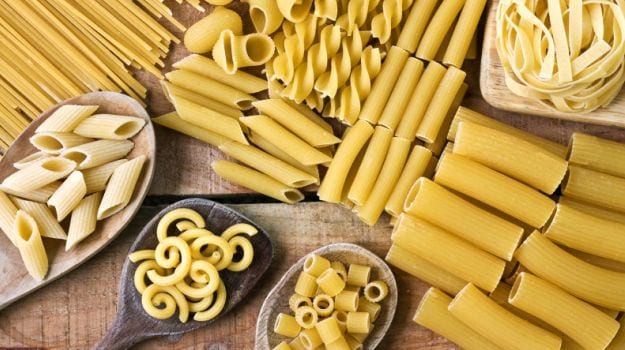Image via iStock
Look for dried pasta with a textured appearance or a powdery coating, says Nicholas Stefanelli. Those signs indicate the pasta has been extruded through a bronze die and will cling better to sauce than smooth dried pastas extruded through Teflon dies.
-- If you go to the trouble of making your own pasta at home, pair it with a simple sauce, such as butter and Parmesan or pesto, says Amy Brandwein. You want the fresh pasta to shine through.
-- Paccheri are large tubes of dried pasta popular in coastal Naples, where locals often pair them with seafood sauces. Mike Isabella takes a different approach: He pairs the pasta with a hearty oxtail ragu. You can even stuff the paccheri, the chef says, and bake them.
-- Professional cooks generally prefer artisanal dried pastas from Italy. There are many different brands, some of which are available at markets such as the Italian Store in Arlington (703-528-6266 or 571-341-1080) or A. Litteri near Union Market (202-544-0183). But if you can't find those pastas, Brandwein says De Cecco is the best of the grocery store brands.
-- Dried pastas typically work best with heavier, rustic sauces such as meaty ragus, chefs generally agree. "I typically think tomato sauce pairs better with dry pasta," says Brandwein. "Spaghetti pomodoro is famous for a reason."
-- Add salt to your cooking water (about 2 teaspoons per quart of water), but not oil. Olive oil will coat pasta, making it hard for the sauce to cling to it. If you're worried that pasta strands will stick to each other while cooking, just stir the pot. A lot.
-- Starch is released into the water as pasta cooks, so don't throw away the liquid. Mix about a quarter-cup into your sauce - or more, depending on how much sauce you've made - and then combine it with the pasta. The starchy water will help the sauce bind better with the pasta, says Michael Friedman.(c) 2016, The Washington Post






